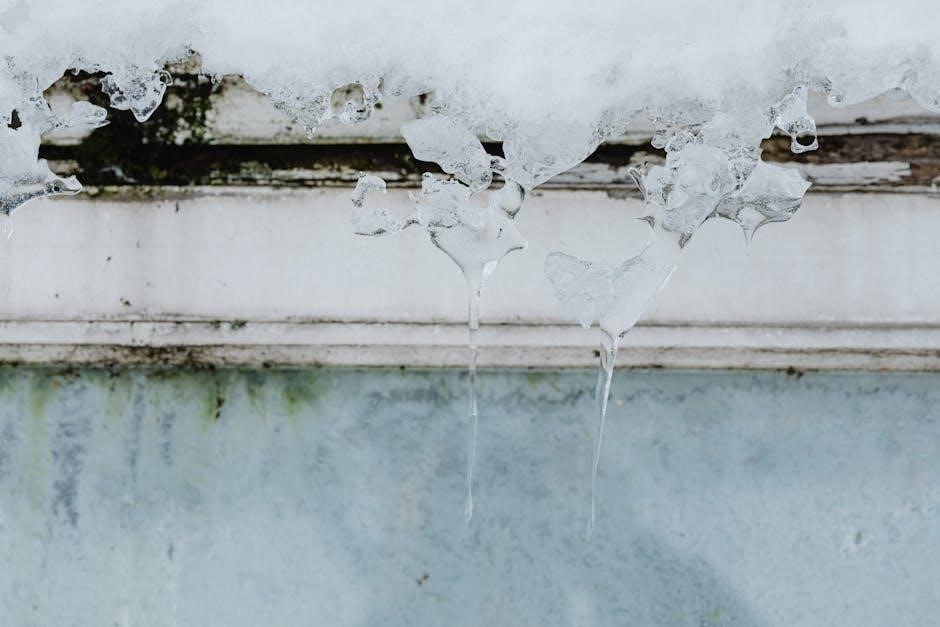Understanding water temperature is key to successful crappie fishing. This guide explores how temperature influences crappie behavior, migration patterns, and feeding habits, helping anglers maximize their fishing success year-round.
Overview of Crappie Behavior and Water Temperature
Crappie behavior is heavily influenced by water temperature, which dictates their activity levels, feeding patterns, and habitat preferences. In early spring, as temperatures rise above 50°F, crappie begin moving from deep wintering areas to shallower waters, becoming more active. When temperatures reach the mid-50s, they start feeding more aggressively, preparing for the spawn. During the spawning season, typically between 55°F and 65°F, crappie move into very shallow water (1-6 feet deep) with abundant cover like brush or submerged trees. In summer, when temperatures exceed 85°F, they retreat to deeper, cooler waters. In fall, as temperatures drop, crappie migrate back to deeper structures, feeding heavily to build energy reserves for winter. In winter, when temperatures fall below 50°F, crappie are less active, often holding in deep holes. Understanding these temperature-driven behaviors is essential for predicting crappie movements and optimizing fishing strategies.
Importance of Understanding Water Temperature for Crappie Fishing
Understanding water temperature is crucial for successful crappie fishing, as it directly impacts their behavior, feeding patterns, and habitat preferences. Crappie are highly temperature-sensitive, and their activity levels fluctuate significantly with changing water conditions. By recognizing how temperature influences their movements, anglers can better predict where to find crappie and when they are most likely to bite. For instance, during specific temperature ranges, crappie transition between deep and shallow waters, making their locations more predictable. Knowing these patterns allows anglers to select the right tactics, such as choosing appropriate lures or bait and adjusting fishing depth. Additionally, understanding temperature-driven behaviors helps anglers identify prime feeding windows and spawning periods, maximizing their chances of a successful fishing trip. This knowledge is essential for both novice and experienced anglers aiming to improve their skills and adapt to seasonal changes.
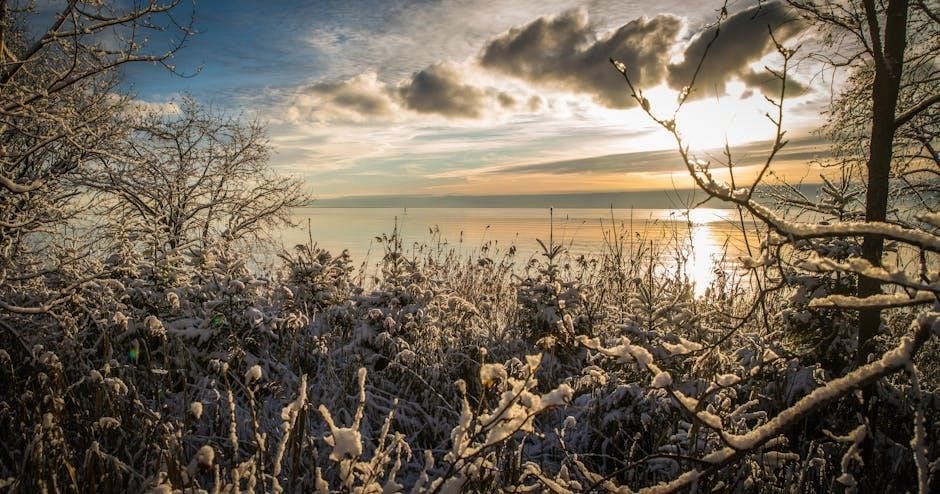
Seasonal Water Temperature Guide for Crappie Fishing
Water temperature significantly influences crappie behavior and location throughout the year. This guide details seasonal patterns, from spring migration to shallow waters and fall return to deeper areas, offering tactical insights for each phase.
Early Spring (35-50°F)
During early spring, crappie transition from deep winter habitats to shallower areas as water temperatures gradually rise. Once temperatures reach around 50°F, crappie become more active, feeding on baitfish and insects in 10-20 feet of water. They often gather near submerged structures like brush piles or sunken logs. Anglers should focus on slow trolling with minnows or small jigs near creek channels and river bends. As the water warms, crappie start moving towards spawning areas, making them more accessible in shallow coves and bays. Patience is key, as early spring crappie can be sluggish but responsive to the right presentations. This period offers prime opportunities for anglers to target pre-spawn crappie effectively.
Prespawn Migration (50-60°F)
As water temperatures rise to 50-60°F, crappie begin their prespawn migration, moving from deep wintering areas into shallower tributary arms and creek channels. Males typically lead the way, seeking out spawning sites in areas with submerged wood or vegetation. During this phase, crappie are highly active, feeding aggressively to build energy reserves before spawning. Anglers should target depths of 6-12 feet, focusing on brush piles, sunken logs, and channel bends. Effective tactics include casting curly-tail grubs, minnows, or small jigs near cover. As the water temperature approaches 60°F, crappie become even more predictable, often staging in shallow ditches and coves before moving onto spawning beds. This period is critical for anglers, offering excellent opportunities to catch large pre-spawn crappie in transitional areas.
Spawning Season (55-65°F)
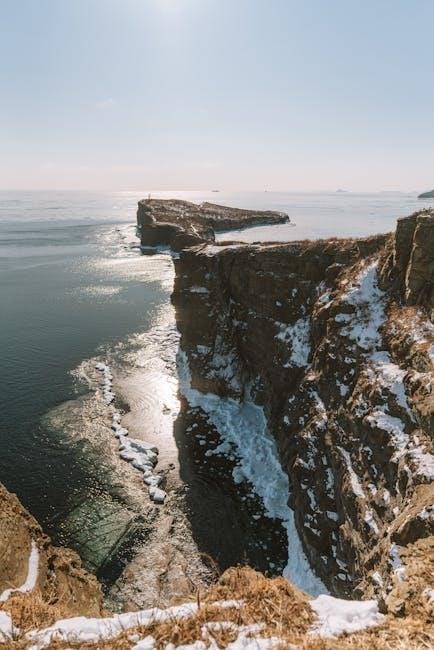
During the spawning season, when water temperatures reach 55-65°F, crappie move into shallow areas to spawn. Males construct nests in sandy or gravelly bottoms, typically in 1-6 feet of water, while females hover nearby. This period offers prime fishing opportunities, as crappie are concentrated and active. Anglers should target shallow coves, protected bays, and areas with submerged vegetation or brush. Using minnows, small jigs, or spinnerbaits can be effective. As the spawn progresses, males remain near nests, making them easier to locate. However, females may retreat to slightly deeper waters after spawning. Patience and precise casting are key, as crappie can be finicky during this time. Understanding their spawning habits and habitat preferences is crucial for a successful fishing trip during this critical phase.
Post-Spawn Behavior (65-75°F)
As water temperatures rise to 65-75°F, crappie transition into post-spawn behavior. Following the spawn, they often seek deeper, cooler waters to recover. During this phase, crappie may be less aggressive, but they can still be caught using the right tactics. Anglers should target the edges of flats, drop-offs, and submerged structures like rocks or trees. Crappie tend to suspend in mid-water, feeding on baitfish schools. Trolling with small crankbaits or vertical jigging near structure can be effective. Additionally, casting soft plastics or minnows around shaded areas can yield results. Post-spawn crappie often seek refuge in deeper pools or near vegetation, where the water is cooler. Patience and a steady presentation are key, as they may be sluggish during recovery. Understanding their post-spawn movements and feeding patterns can help anglers capitalize on this transitional period and land more fish.
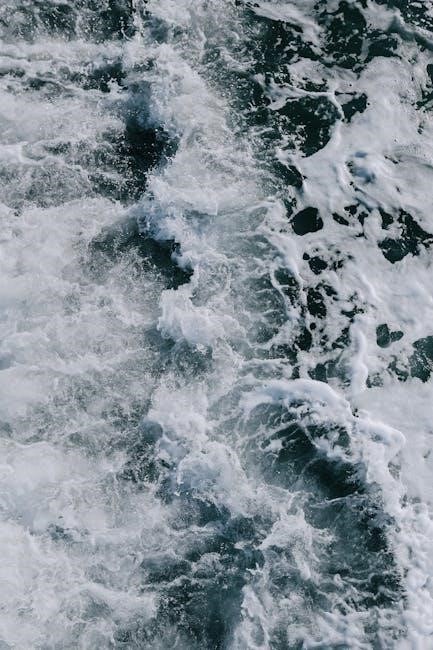
Summer Water Temperature Patterns
During summer, crappie seek deeper waters as surface temperatures rise. Anglers must adjust tactics to target these areas effectively, focusing on structure and cooler zones where crappie congregate.
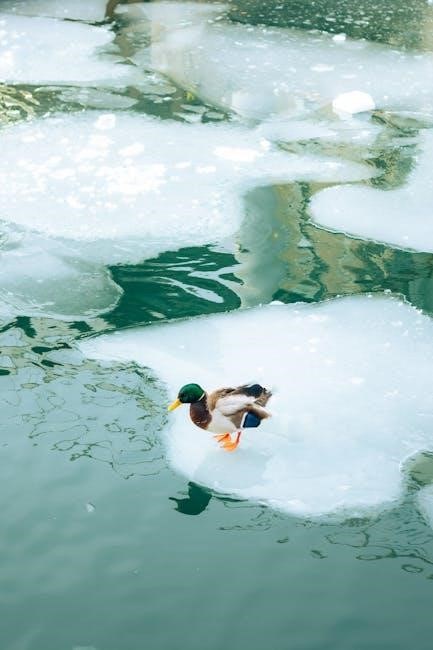
Warm Water Tactics (75-85°F)
During the summer months when water temperatures range from 75°F to 85°F, crappie tend to seek deeper, cooler waters. Anglers should focus on structures like submerged logs, rocks, and drop-offs, where crappie congregate to escape the heat. Trolling with small crankbaits or jigs near these structures can be effective. Using live minnows or soft plastic lures on a Kentucky rig is also a proven strategy. Fish often suspend in 10-20 feet of water, so adjusting your presentation to match their depth is crucial. Pay attention to shaded areas, such as under overhanging trees or near aquatic vegetation, as these spots can provide cooler microhabitats. Early morning and late evening are prime times for crappie activity during this period. Patience and precise presentations are key to success in these warmer conditions.
Deep Water Strategies (85°F and Above)
When water temperatures exceed 85°F, crappie typically retreat to deeper, cooler waters. Targeting depths of 18-30 feet near structural elements like channel points, humps, and submerged timber is essential. Schools of crappie often suspend around baitfish, making vertical presentations with small jigs or spoons highly effective. A Kentucky rig bounced slowly along the bottom can also entice bites. In clear water, using lighter tackle and natural-colored lures mimics baitfish, increasing the chances of success. Focus on areas where the bottom drops sharply into deeper water, as these transitions attract crappie. During extreme heat, consider fishing near shaded areas like lily pads or overhanging trees, where water temperatures may be slightly cooler. Deep water tactics require precision and patience, as crappie may be sluggish, but they are still catchable with the right approach.
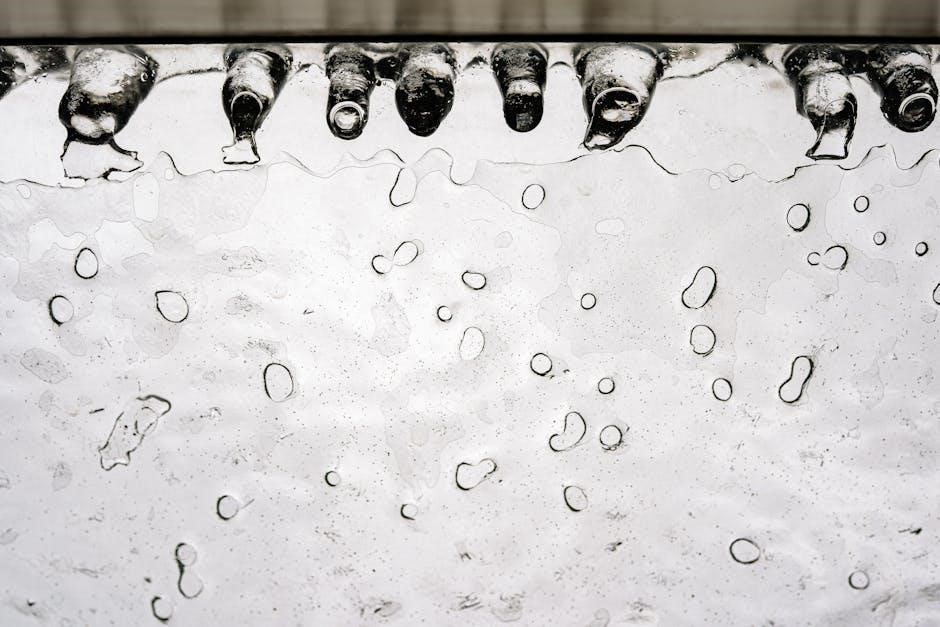
Fall Water Temperature Transition
As water temperatures cool, crappie migrate from deep summer haunts to shallower feeding areas, preparing for winter. Target transitional zones, such as creek channels and submerged structures, with minnows or jigs effectively.
Early Fall Migration (70-80°F)
As water temperatures begin to cool in early fall, crappie start their migration from deep summer haunts to shallower feeding areas. During this period, they are actively chasing baitfish and preparing for winter. Anglers should target transitional zones, such as creek channels, submerged wood, and near structure. Crappie often suspend in the 10-20 foot range, feeding on schools of shad or minnows. This is a prime time to use minnows, small jigs, or crankbaits that mimic baitfish. Focus on areas with abundant cover, such as sunken logs or brush piles, as crappie tend to congregate near these structures. The cooling water invigorates their metabolism, making them more aggressive and responsive to lures. Key locations include creek bends, drop-offs, and the edges of flats. By targeting these areas with the right presentation, anglers can capitalize on the early fall migration and enjoy consistent catches.
Late Fall Feeding Patterns (60-70°F)
As water temperatures cool to the 60-70°F range, crappie enter a feeding frenzy to build fat reserves for winter. They move to deeper areas, often 15-25 feet deep, and congregate around structure like submerged wood or drop-offs. During this period, crappie actively feed on baitfish, making them more aggressive and easier to target. Key locations include creek channels, submerged humps, and the edges of flats where baitfish schools are present. Anglers should use slow-trolled jigs, crankbaits, or minnows to mimic the natural prey. Vertical jigging near structure or casting to suspended schools can be highly effective. The cooling water triggers intense feeding activity, making this a prime time for consistent catches. Focus on transition zones where shallow areas meet deeper waters, as these are often hotspots for crappie activity during late fall.
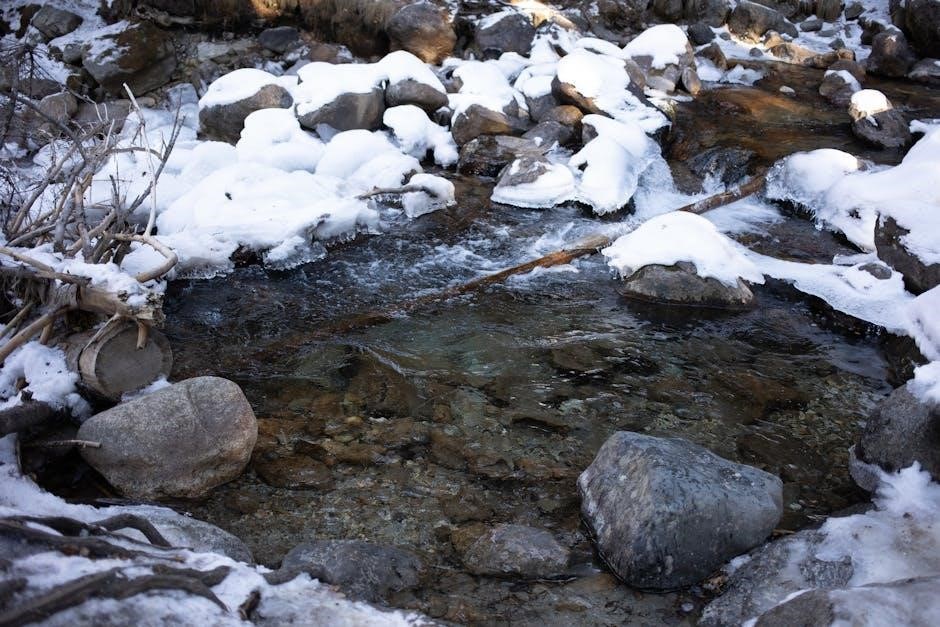
Winter Water Temperature Considerations
In winter, crappie gather in deeper waters (30-50 feet), holding near structure. The bite is sluggish, but they can be caught with slow-moving jigs or minnows near submerged humps and channels.
Cold Water Crappie Behavior (Below 50°F)
When water temperatures drop below 50°F, crappie become less active and seek deeper waters, typically between 30-50 feet. They hold close to bottom structures like humps, ledges, and submerged timber. Their metabolism slows, making them more sluggish, but they still need to feed. Anglers should focus on deep, structured areas near main lake channels or tributaries. Vertical presentations, such as small minnows or spoons, worked slowly near the bottom, are effective. Schools may suspend above baitfish, requiring precise depth control. Slow trolling with crankbaits or jigs can also yield results. Patience is key, as crappie in cold water often bite softly. Targeting these areas with the right presentation can still produce quality catches, even in frigid conditions.
Targeting Deep Holes and Structure (40-50°F)
At water temperatures between 40-50°F, crappie seek refuge in deep holes and structured areas. These locations provide stability and protection from harsh conditions. Key spots include river channels, submerged humps, and deep creek bends; Anglers should use vertical presentations, such as minnows or small spoons, jigged slowly near the bottom. Kentucky rigs with minnows or tube baits can also be effective. Schools often suspend near baitfish, so locating these areas is crucial. Slow trolling with crankbaits or Road Runners near deep structures can attract bites. Focus on isolated wood cover and channel drop-offs, as crappie tend to congregate there. Patience and precise depth control are essential for success in these cold conditions. Understanding these patterns helps anglers target crappie effectively during the late fall and early winter months.
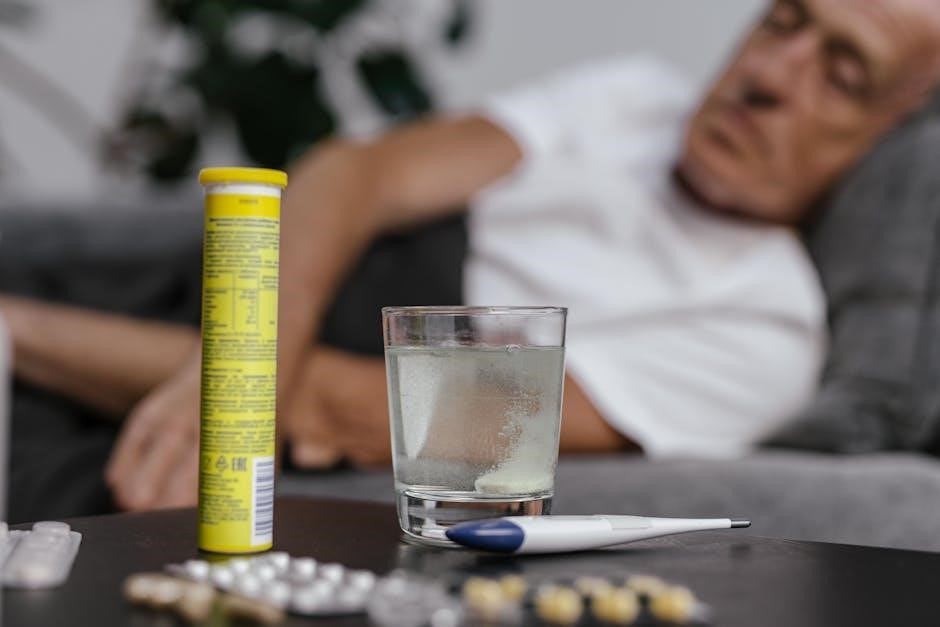
Optimal Water Temperature Ranges
Crappie thrive in water temperatures between 55°F and 85°F. During this range, they display varied activity levels, moving between shallow and deep waters, making it crucial for anglers to adapt their strategies accordingly.
Best Temperatures for Crappie Activity (55-75°F)
Crappie are most active in water temperatures between 55°F and 75°F. During this range, they transition from deeper wintering areas to shallower zones, making them more accessible to anglers. As temperatures rise, crappie move into spawning areas, often near submerged structures like brush piles or vegetation. Feeding activity peaks during this period, with crappie aggressively pursuing baitfish and jigs. Anglers should target areas with ample cover, such as sunken logs or shallow coves, where crappie tend to congregate. The warmer end of this range (65-75°F) typically coincides with the spawning season, where both male and female crappie are actively feeding and defending nests. Using minnows, small jigs, or crankbaits can be highly effective during this time. However, as temperatures approach the upper limit, crappie may seek deeper, cooler waters, requiring anglers to adjust their tactics accordingly.
Prime Feeding Times and Temperatures
Crappie feeding activity is strongly influenced by water temperature and time of day. During early spring, when temperatures range from 50°F to 60°F, crappie tend to feed during late morning and early afternoon as the water warms. In summer, when temperatures exceed 75°F, crappie often feed at dawn or dusk when the water is cooler. During the fall, as temperatures drop to the 60-70°F range, crappie are more active during midday. In winter, when temperatures are below 50°F, feeding occurs sporadically, usually during the warmest part of the day. Understanding these patterns helps anglers time their fishing trips effectively. Using live bait like minnows or jigs that mimic natural prey can increase success during prime feeding times. Additionally, targeting areas with abundant baitfish, such as near submerged structures or drop-offs, can further enhance catching crappie during their most active feeding periods.
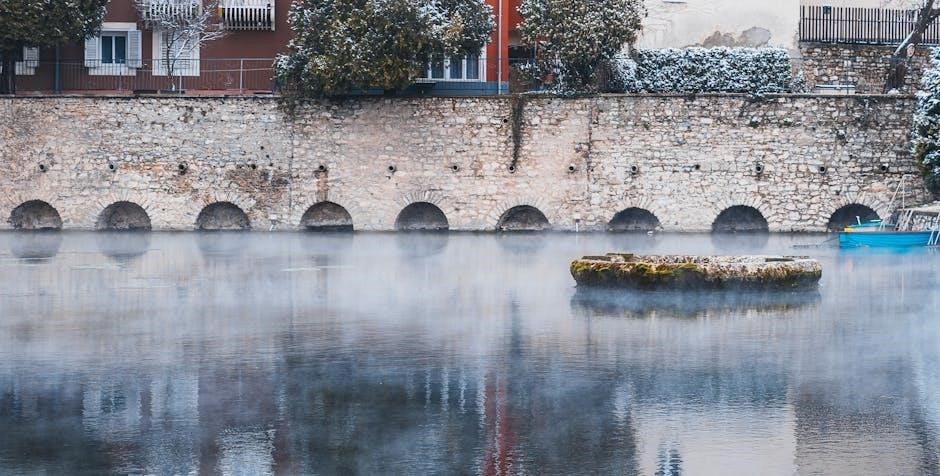
Techniques and Gear for Different Temperature Ranges
Crappie fishing success varies with water temperature, requiring adaptable techniques and gear. Use jigs and minnows in colder months, switching to crankbaits and spinnerbaits in warmer temperatures for optimal results.
Spring and Prespawn Tactics
During the spring, crappie migrate to shallower waters as temperatures rise, making them more accessible to anglers. Target areas like submerged wood, channel bends, and protected coves, where crappie often congregate. Use jigs, minnows, or vibrating tail lures to entice bites. In the prespawn phase, crappie tend to gather near tributary arms and creek channels. Focus on depths of 10-20 feet, casting soft plastics or live bait near structure. As water temperatures approach 55°F, crappie become more aggressive, feeding heavily to build energy reserves. Males typically move shallower than females, preparing spawning areas. Use slow, steady presentations, allowing lures to sink near cover before retrieving. This period offers prime opportunities to catch large crappie, so adapt tactics to match their shifting behavior and locations.
Summer and Post-Spawn Strategies
During summer, crappie seek cooler, deeper waters as surface temperatures rise above 85°F. Target structural elements like submerged humps, drop-offs, or standing timber in depths of 15-30 feet. Troll with crankbaits or use a Kentucky rig with live minnows to cover large areas effectively. Post-spawn, crappie remain near spawning sites but gradually move to deeper, shaded areas. Focus on isolated cover such as sunken brush or logs, where they tend to suspend. Use jigs or small spoons to entice bites, as crappie may be less active in the heat. Be patient, as their metabolism slows, requiring slower presentations. Summer fishing often involves adapting to their deep-water habits, but consistent effort can yield rewarding results. Adjust tactics to match their seasonal behavior and habitat preferences for success during this period.
By understanding water temperature patterns, anglers can better locate and catch crappie. Adapt tactics seasonally, remain patient, and practice precise presentations to maximize fishing success throughout the year.
Maximizing Your Crappie Fishing Success
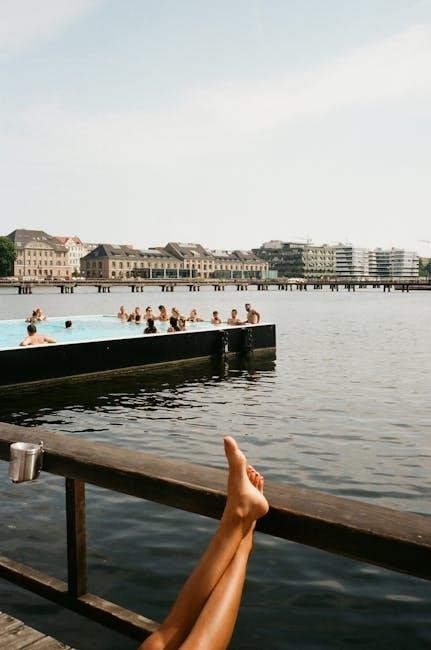
To maximize crappie fishing success, anglers must align their strategies with water temperature changes. During early spring, target shallow areas as crappie move in to spawn. Use minnows or jigs near submerged structures like brush piles or sunken logs, where crappie tend to congregate. As temperatures rise into the prespawn phase, focus on creek channels and tributary arms, where crappie migrate. Utilize curly-tail grubs or tube baits to attract actively feeding fish. During the spawn, concentrate on shallow coves with gravel or sandy bottoms, employing tight-line techniques with live bait for optimal results. In summer, when temperatures exceed 85°F, crappie seek deeper waters. Use Kentucky rigs or deep-diving crankbaits to reach them. In fall, as temperatures drop, crappie return to feeding aggressively before winter. Target baitfish schools in tributaries and use shad-colored crankbaits or spoons for effective catches. During winter, when temperatures are below 50°F, focus on deep holes and structure, presenting small lures or live minnows slowly and precisely; By tailoring your approach to these temperature-driven patterns, you can significantly enhance your crappie fishing success throughout the year.
Additional Resources for Crappie Fishing
For anglers seeking to refine their crappie fishing skills, numerous resources are available to enhance knowledge and success. Online forums like Crappie.com offer detailed discussions, expert advice, and real-time updates on water temperature impacts. Expert guides, such as Bobby Belmonte, provide insights into seasonal patterns and tactics. Additionally, instructional videos and tutorials on platforms like YouTube cover topics like rigging techniques, lure selection, and depth strategies. Local fishing reports and state wildlife agency websites often include region-specific crappie behavior insights tied to temperature changes. Books and eBooks dedicated to crappie fishing delve into advanced strategies and historical data. Finally, attending fishing seminars or joining local fishing clubs can connect anglers with experienced mentors. By leveraging these resources, anglers can stay informed and adapt their strategies to varying conditions, ensuring a more productive and enjoyable fishing experience.
